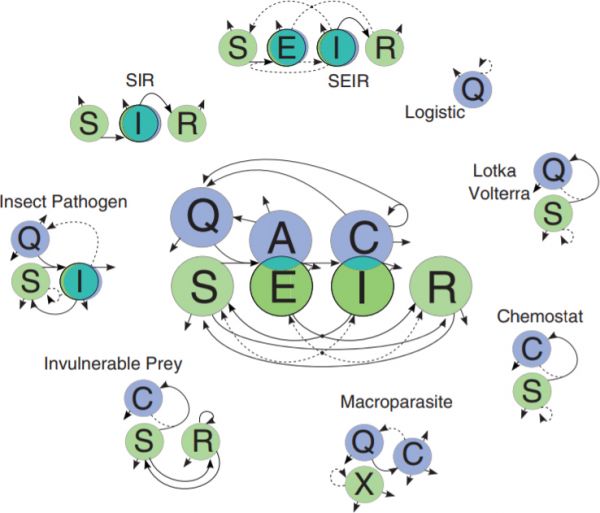lafferty2015general
A general consumer-resource population model
Kevin D. Lafferty, Gulio DeLeo, Cheryl J. Briggs, Andrew P. Dobson, Thilo Gross and Amand M. Kuris
Science 349, 854-857, 2015
Food-web dynamics arise from predator-prey, parasite-host, and herbivore-plant interactions. Models for such interactions include up to three consumer activity states (questing, attacking, consuming) and up to four resource response states (susceptible, exposed, ingested, resistant). Articulating these states into a general model allows for dissecting, comparing, and deriving consumer-resource models. We specify this general model for 11 generic consumer strategies that group mathematically into predators, parasites, and micropredators and then derive conditions for consumer success, including a universal saturating functional response. We further show how to use this framework to create simple models with a common mathematical lineage and transparent assumptions. Underlying assumptions, missing elements, and composite parameters are revealed when classic consumer-resource models are derived from the general model.

Figure 1: Diagram of the general consumer-resource model and its relationship to classic consumer-resource models.
"Lafferty et al. show that all forms of these relationships come down to fundamental consumer-resource interactions"
Sasha Vignieri, Science, Aug 21, 2015.
"Energy flow in Ecosystems"
Just Cebrian, Science, Sep 4, 2015
"Could there be a unified theory of ecology?"
Kevin Knudson, Forbes, Aug 30, 2015